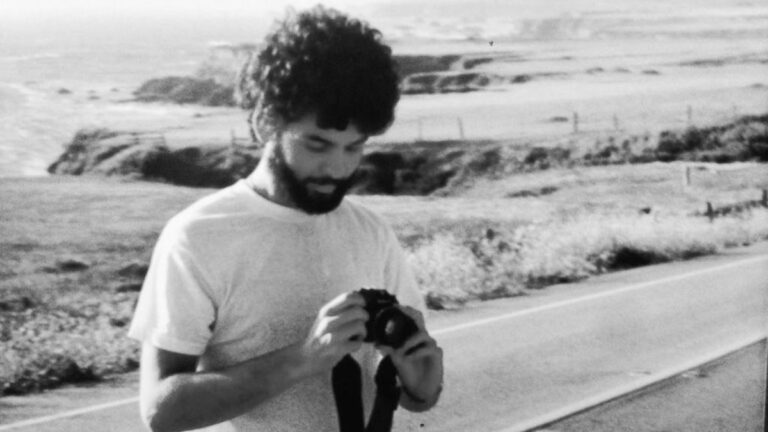To make them, I spent some time around Val Brembana near Bergamo, where there are a lot of shirt specialists. I found a small company run by a couple and their two sons with just eight or nine people in the workshop, and they helped me develop the idea and make the first samples. And then we made around 1,800 pieces, which felt like a lot. I loaded them into my car, a white Volvo station wagon, and started trying to sell them. I thought I knew of about 25 stores in Italy that would understand what I was trying to do, so I visited them all. Honestly, at the beginning, it was very tough. But it was also invaluable. I learnt everything because I had everything on my shoulders. I was commercial director, production director, chief designer, CFO and delivery driver, too.
Mine was a first job that lasted for a very long time, and I don’t want to bore you. But, slowly, I learnt and grew the company step by step. The next step was chinos, and again, we used a different kind of fabric. This time around it was a heavy cotton that I imported from Colombia, and I added embroideries, very Italian, and sometimes maybe a little too much. I stuck to this formula of a preppy foundation built with creative Italian taste. Because the garments were classic but expressed in a new and unusual way, it offered a real alternative, especially for summertime, to a big audience of men whose fashion ideas were quite cautious but who also did not want to be dressed exactly like everybody else: it was just different enough. And so it grew and grew until, in the late 1990s, we had around 300 employees. At some point around then, another company offered to buy New England from me. At first, I couldn’t even think about the idea: I’d created it and raised it from nothing, and it would have felt like I would have been selling my kids. But of course, it wasn’t like that at all. So I thought about it and eventually agreed to sell.
This is how my first job ended when I was in my late 30s, leaving me wondering what I was going to do next. I knew I couldn’t stop working — I just have too much energy. Quite quickly, I decided I didn’t want to try and make a new brand. What I wanted to do was find something with a story I could build on. And I already knew all about Moncler: I got my first jacket when I was 14 — it was light blue and I wore it to school every day on my bike, and it saved me in the Como winters. I was doing some consulting around the time my chapter at New England was coming to an end, and that’s when I reconnected with the Moncler brand. At that time, the business was in a bad condition. So when the owners decided to sell, I thought it was an amazing, perfect opportunity to take the next step I’d been looking for. Which is how my first job led to my second job here at Moncler. Everything I learnt while building New England proved invaluable as I set about rebuilding Moncler. And just like New England, what I do at Moncler is much more than just a job: it’s where I put all my focus, all my passion and all my energy. Because I still love going into the office every day.
Comments, questions or feedback? Email us at feedback@voguebusiness.com.
More from this author:
A-Cold-Wall sold to Frasers Group-backed Four Marketing
The first woman on the moon will wear this Prada spacesuit
Roberto Cavalli’s Fausto Puglisi on revitalising the brand while honouring the man


